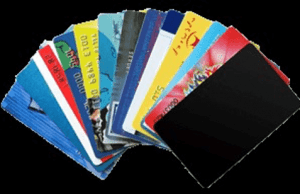So you’ve decided to invest in some ID cards for your business—and rightly so. By providing ID cards to your employees, you are making an investment in your business image as well as your workplace security. Once you’ve designed and digitally created your employees’ ID cards, the next step will be printing. There are a few paths you could take here.
As a starting point: will you internalize the printing process by purchasing an ID card printer, or will you outsource this task? There are pros and cons to both options, and such factors will vary depending on your business size and requirements. More pressingly, though, the question to ask yourself is which printing method you will choose. It’s normal to feel uncertain, so let’s break down your options to bring you closer to a decision.
Contents
A technological background
When it comes to ID card printing, there are two major technologies: direct-to-card and reverse transfer (also known as ‘retransfer’). Direct-to-card saves the most time, creating cards by using colored overlays and monochromatic ribbons. Based on dye-sublimation processes, it converts ink to vapor, which then diffuses across the card surface. It completes this process by using its print head to heat up its ribbon panels. direct-to-card printers facilitate 300-DPI resolutions, rendering them ideal for cards with more intricate designs. Reverse transfer printers utilize similar technologies, the difference lying only in the methodology used. Reverse transfer printers print onto clear films that then fuse to card surfaces, allowing for over-the-edge printing and quality printing across even the most uneven of surfaces. Reverse transfer printers allow for a 600-DPI resolution and ergo provide a higher-quality option.
A case of retransfer printing: PVC ID cards

Polyvinyl chloride (aka PVC) is a strong plastic with a smooth surface. It provides a bold and vivid finish to ID cards. It is a great choice for cards featuring varying colors and/or intricate designs.
For PVC card printing, you will need a retransfer printer, which prints onto the reverse of clear film. The film is then thermally bonded to the card. The retransfer process itself brings image consistency to all cards (even double-sided prints). It is a form of edge-to-edge printing that works across surfaces both even and uneven.
What do you need from your ID cards?
Now that you have a better understanding of ID card printer functionality, you’ll need to consider your business requirements. Does your business require cards featuring access control features, such as magnetic strips, smart chips, or RDIF tags? Or can you cut costs and forego the extra features? Whatever you need from your ID cards will determine which printing method you go with.
RFID cards, for example, will necessitate retransferring printing; direct-to-card printing does not print well on uneven surfaces. If you only need something simple, however, direct-to-card printing may suffice. This is a great option so long as the cards are single-sided with flat surfaces. Bear in mind that direct-to-card printing does not have scope for over-the-edge printing, either—although the right brand of printer can minimize this issue with minuscule margins.
Still, feeling unsure?
If you’re still feeling unsure about your ID card printing options, have a chat with your preferred providers or shops selling ID card printers (if you’ve chosen to internalize the process). They can talk you through all the factors to determine which process will fit your business best.








